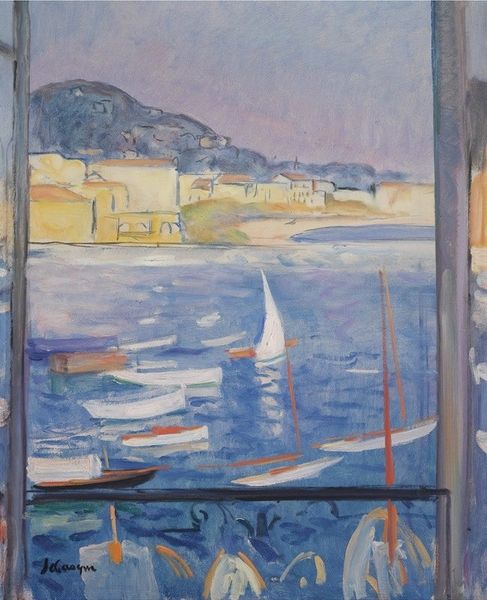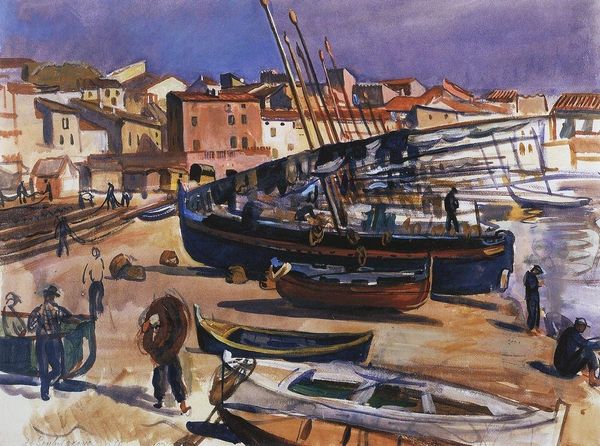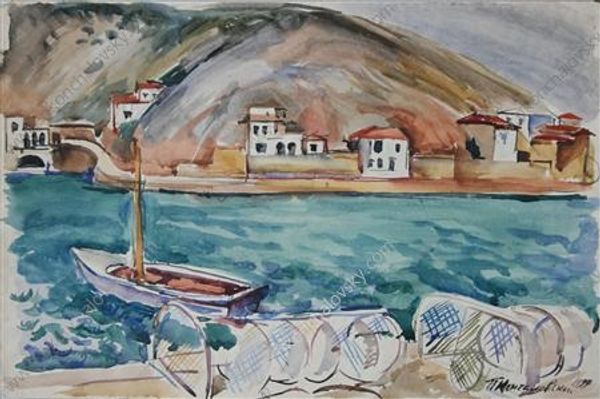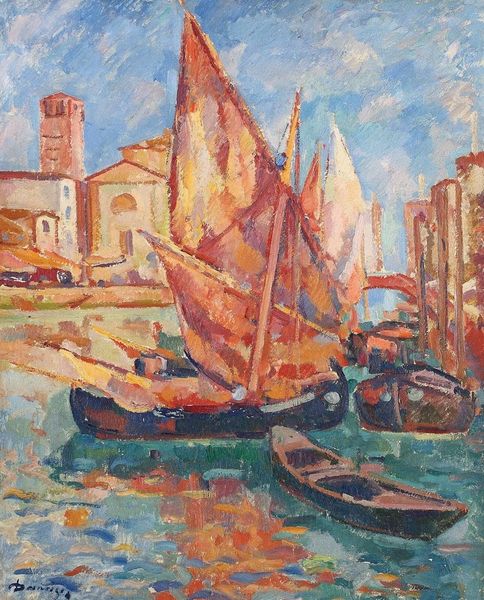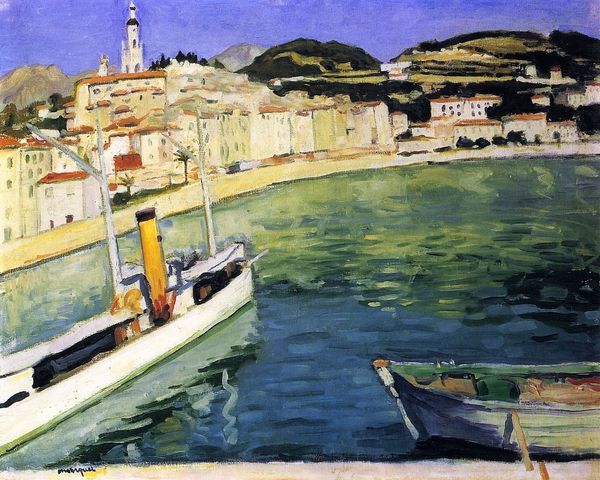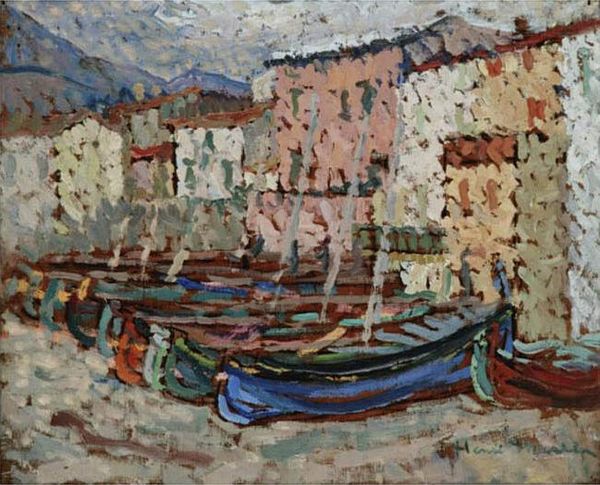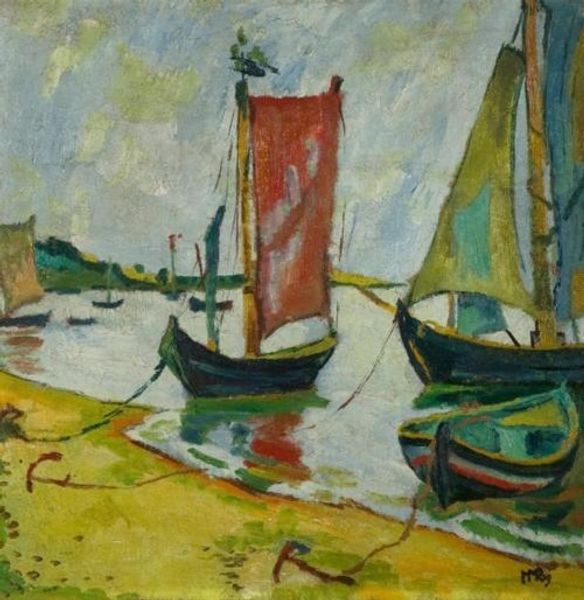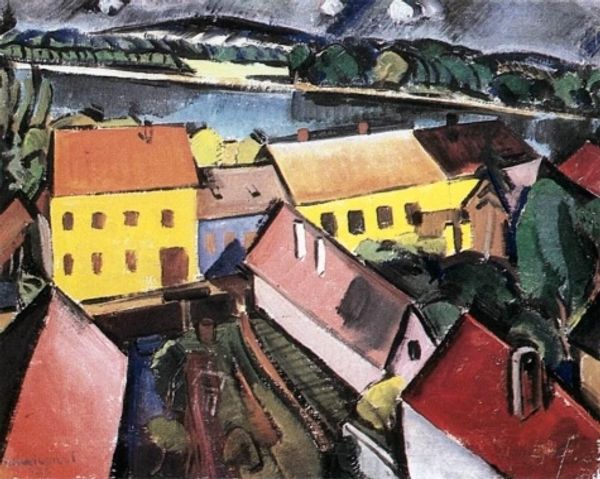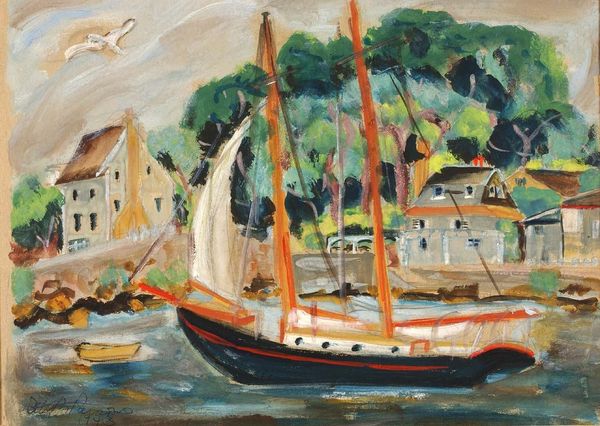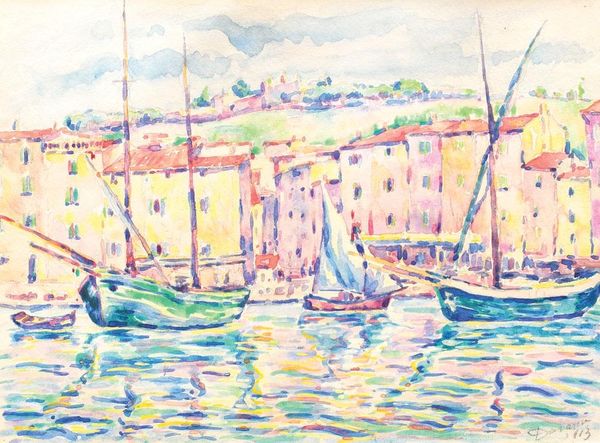
Dimensions: 89 x 116 cm
Copyright: Public domain US
Editor: This is Pyotr Konchalovsky's "Cassis. Boats." painted in 1913 using oil paints. It reminds me of a postcard; the colours are so bold and cheerful. What strikes you about this piece? Curator: Immediately, I'm drawn to the visible brushstrokes and the texture of the oil paint. Look at how Konchalovsky applied the pigment so thickly. It begs the question, doesn't it: what sort of labor and resources went into creating this impasto surface? Were the materials readily available? Was this thick application a conscious aesthetic choice reflecting contemporary material excess? Editor: That's fascinating! I was focused on the image itself but thinking about the actual paint… Were such vibrant colors typical for that time? Curator: Absolutely. Considering its production date of 1913, Konchalovsky’s use of such liberated colour situates it neatly within pre-war Fauvist and Post-Impressionist experiments with materials and palettes. It’s critical to investigate what innovative pigment technologies and manufacturing advances influenced such liberated handling within fine art culture. Editor: So, understanding the *stuff* that made the painting helps understand its place in art history. Curator: Precisely. Moreover, examining the subject itself, a coastal cityscape, compels us to examine its place within the leisure and tourist industries shaping art markets at the turn of the 20th Century. These 'boats', which are a core object of art-making, and of a port town’s social-economic conditions. Editor: That gives me so much to think about. I’ll definitely be considering the materials more when I look at paintings from now on. Curator: Indeed. This materialist reading allows us to question the boundaries we often create between the artistic idea and material execution, to really reflect on the labour that produces a ‘masterpiece’.
Comments
No comments
Be the first to comment and join the conversation on the ultimate creative platform.
